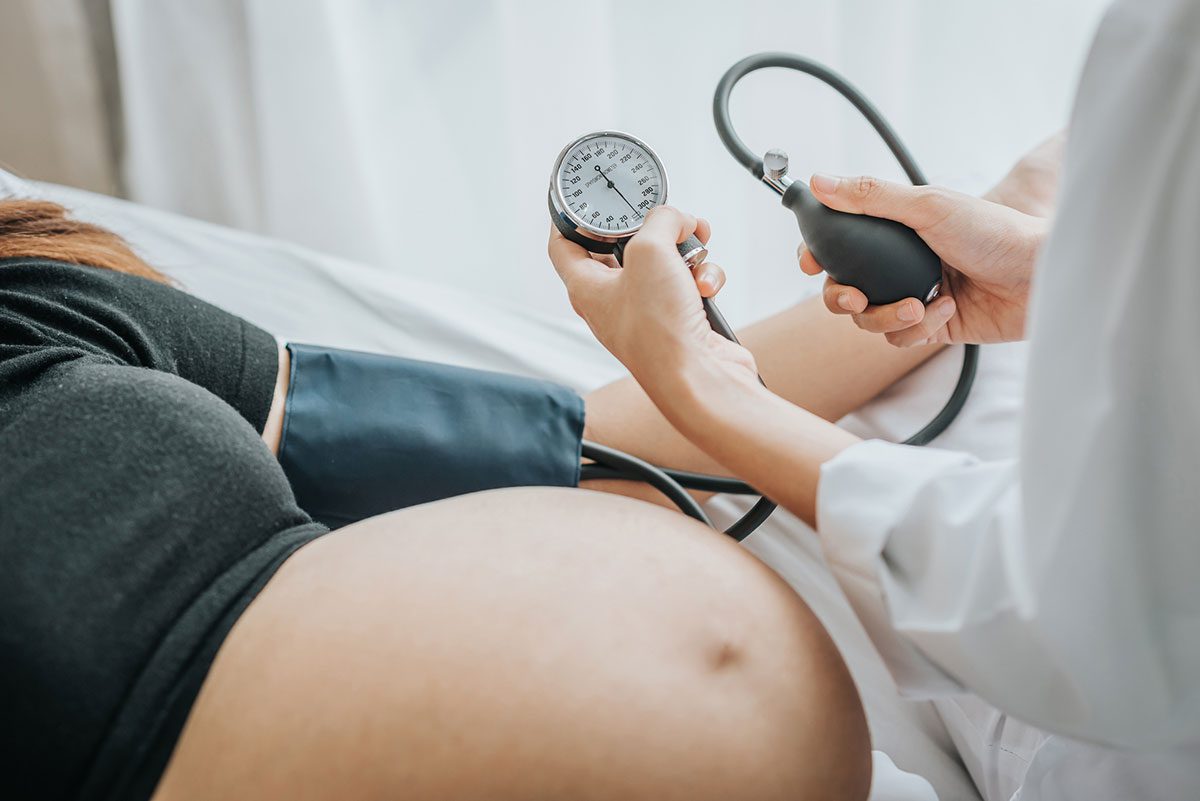Preeclampsia is a condition in pregnancy characterized by high blood pressure, sometimes with fluid retention and proteinuria. The condition typically appears somewhere around 20 weeks into pregnancy or later. Preeclampsia exists in between 5% and 8% of all pregnancies.
This serious condition doesn’t only affect pregnant women, but also their unborn babies. Preeclampsia can lead to fatal complications for both mother and baby when left untreated. In fact, preeclampsia is a leading cause of maternal and infant illness and death throughout the world.
What are the Signs and Symptoms of Preeclampsia?
Elevated blood pressure that rises gradually or suddenly is the main symptom of preeclampsia. The Mayo Clinic explains that your blood pressure is abnormally high if it exceeds 140/90 on two separate occasions that are at least four hours apart.
A women with preeclampsia will also often have the presence of excess protein in her urine. She often also has signs of damage to another organ system such as the kidneys and liver. Other signs and symptoms include swelling in the hands or face (edema), severe headaches, sudden weight gain, upper abdomen pain, a decrease in urine output, and shortness of breath. Furthermore, changes to vision including blurred vision, light sensitivity, and temporary vision loss.
Is Preeclampsia Treatable?
Blood pressure or seizure prevention medications are treatment options. According to the Preeclampsia Foundation, giving birth is the most effective way to treat the condition, though it can still take time for a woman’s condition to improve even after delivery.
It’s important to monitor your blood pressure during pregnancy and communicate with your doctor if you experience symptoms. Prenatal care that involves regularly testing your blood pressure, testing your urine for protein, and checking your weight is extremely important, as for many women, preeclampsia may not present any obvious symptoms.
Follow a balanced and healthy prenatal diet for preeclampsia prevention. This includes reduced consumption of refined sugars, caffeine, and processed foods. Also, let your ObGyn provider know about all medications and supplements prescribed by other physicians.
What Happens After Pregnancy?
Some women develop a condition called postpartum preeclampsia. This is when the preeclampsia sets in somewhere between two days and six weeks after a baby has been delivered (most commonly in the first week after delivery). It can occur in women who had normal blood pressure during pregnancy and those who had experienced preeclampsia.
In addition to high blood pressure, women with postpartum preeclampsia may experience symptoms. These include severe headaches, nausea or vomiting, changes in vision such as seeing spots, and shortness of breath. Also, swelling in the face or hands, and pain in the upper abdomen. This is a very serious condition that puts women at risk of seizure, stroke, organ damage, and even death. Therefore, it’s very important to be in touch with your doctor if you experience any of these symptoms.
Proper prenatal care is very important in order to detect and manage preeclampsia.
If you would like to meet with a knowledgeable doctor, consider contacting Women’s Health Arizona. As Arizona’s largest ObGyn group, we’re trained and solely dedicated to delivering the best ObGyn experience in convenient and comfortable settings around Phoenix.

